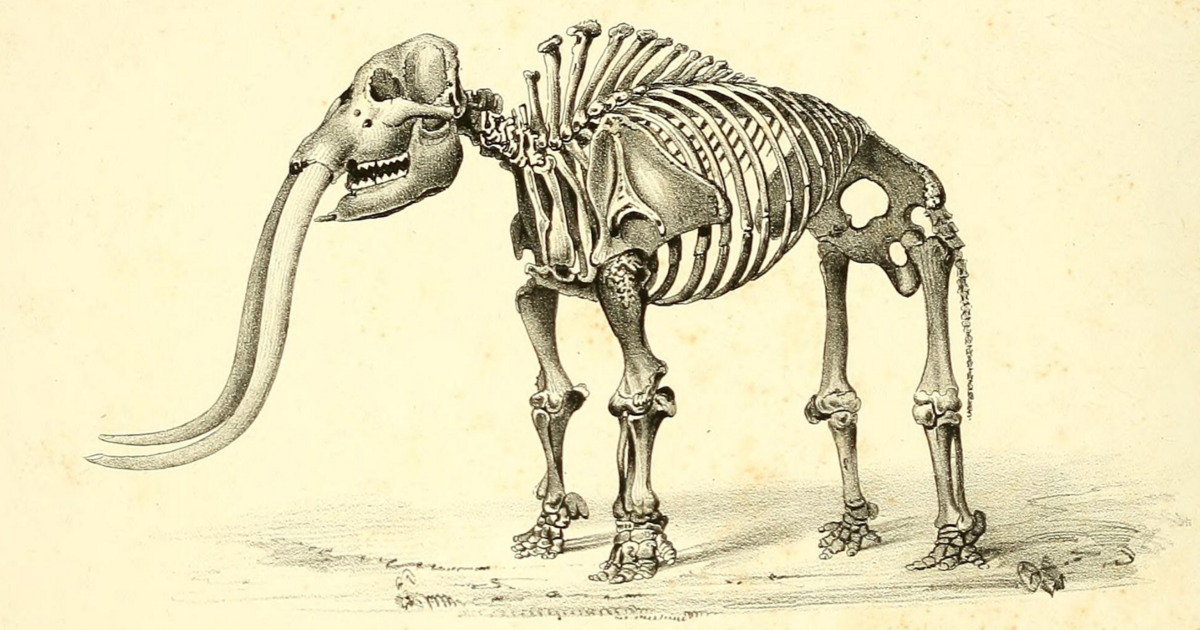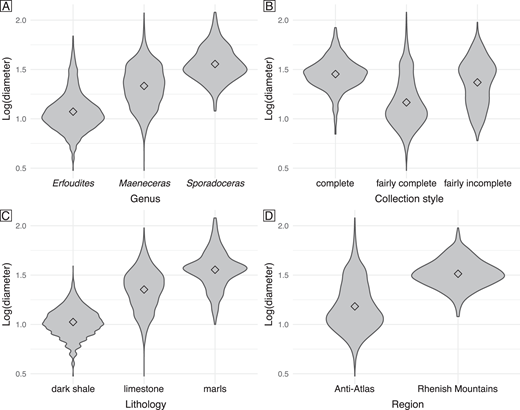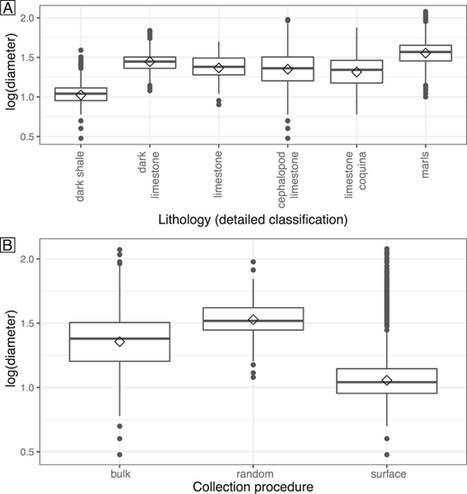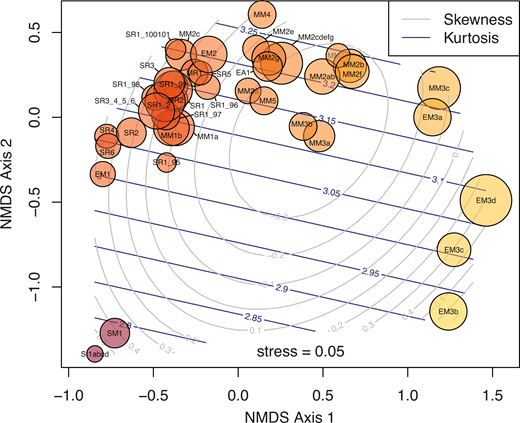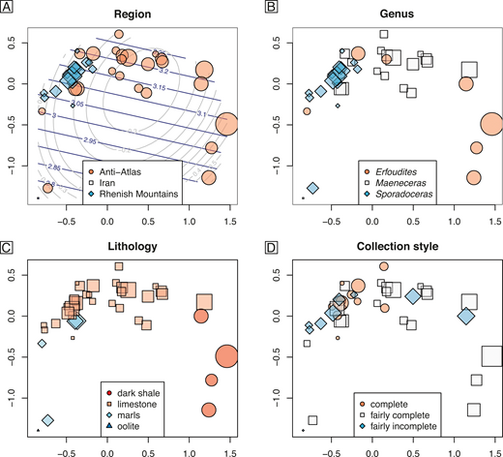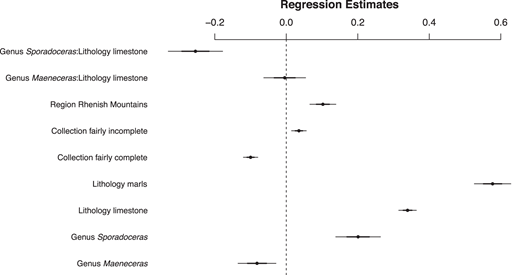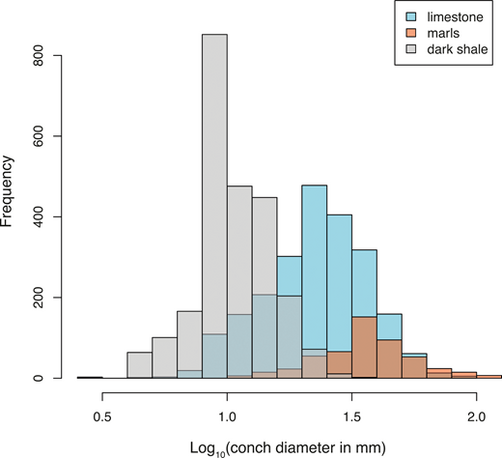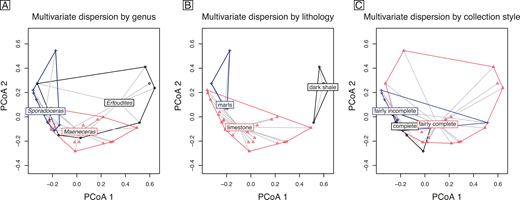Final publication of the year: #Lithology #Controls #Ammonoid #Size #Distributions with @Emiliagnathus; Stella Buchwald; Christian Klug and Dieter Korn: https://doi.org/10.2110/palo.2021.063 #Paleobiology #Paleontology #Ecology #EvolutionaryBiology
Body-size distributions of organisms across #environments in space and time are a powerful source of information on #ecological and #evolutionary processes. However, most studies only focus on selected parameters of #size distributions (e.g., central tendency or extremes) and rarely take into account entire #distributions and how they are affected by the #collection style and #facies
Here we analyze the impact of #facies, #region, #taxonomy, and #collection style over #size #distributions using diameter as a proxy of Late #Devonian #ammonoids in their entirety using non-metric #multidimensional #scaling and #PERMANOVA based on #Kolmogorov distance.
#Kurtosis was an important #parameter differentiating #size distributions, with #platykurtic distributions in #marls and #leptokurtic distributions in #limestones, suggesting that this parameter may reflect different degrees of #time #averaging. Most size #distributions were positively #skewed, but most strongly in marls. Complete #sampling led to #skewness values close to zero (#symmetrical distributions) and high kurtosis.
Food for thought #Samples from higher #paleolatitudes were on average smaller, but contained #outliers with the largest #sizes, highlighting the need to analyze entire #distributions. #Lithology and #collection differences need to be accounted for when evaluating #size differences across #space (#polar #gigantism) and #time (#Lilliput #effect). Similarly, differences in #facies may affect #species #determination
